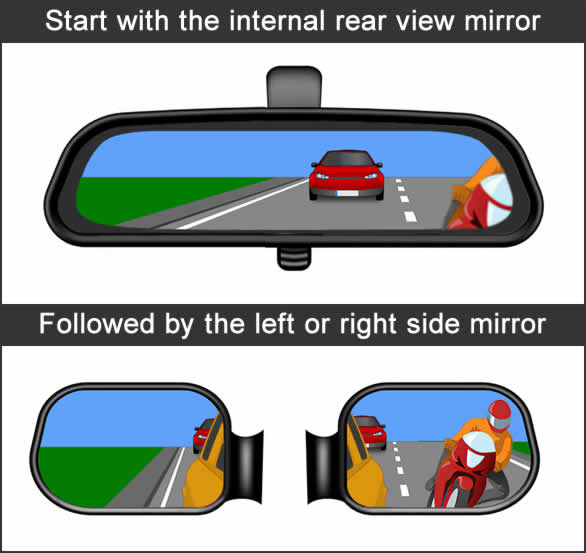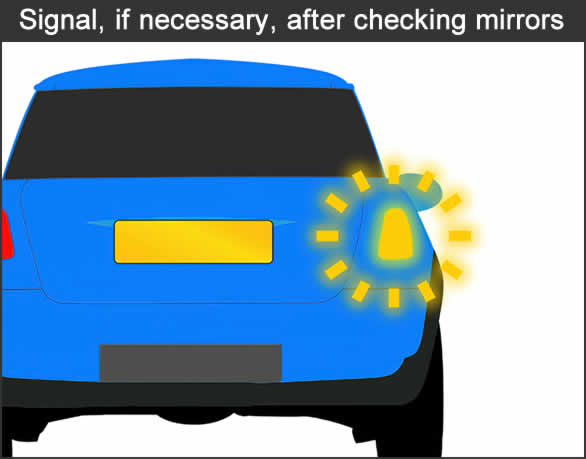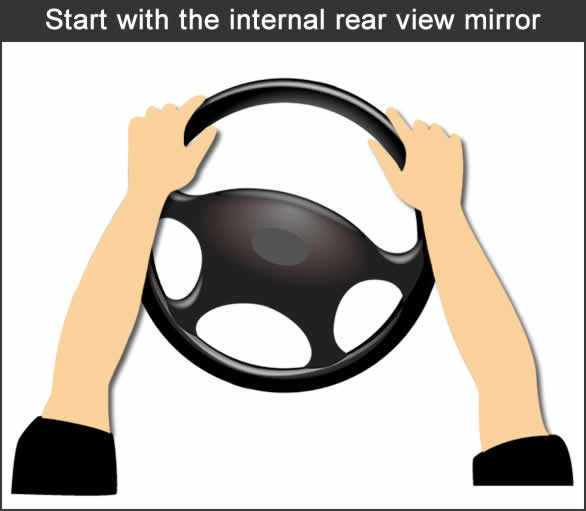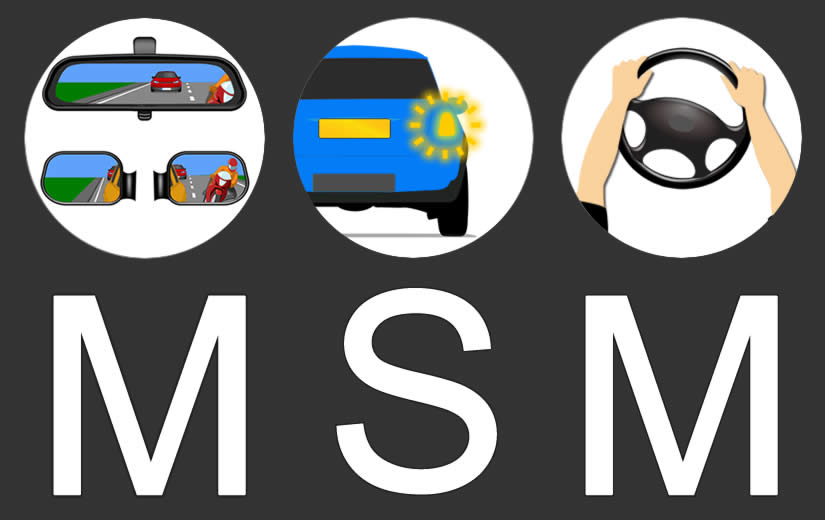MSM is a routine used by learner drivers and stands for Mirror, Signal, Manoeuvre. The MSM driving routine allows drivers to be aware of their surroundings and to safely signal their intentions to other road users before carrying out a manoeuvre.
The Mirror, Signal, Manoeuvre is often the first routine that you’ll be taught when starting out learning to drive. We’ll now go into a little more detail about what the MSM driving routine means, how to do it, when you need to carry it out and why it’s important.
MSM Driving Routine Explained
MSM is an abbreviation of Mirror, Signal and Manoeuvre. Let’s start by explaining the mirrors.
Why Do You have to Check your Mirrors before Signalling?
We look in the mirrors to see what’s going on around us because we need to be sure that it’s safe to carry out the manoeuvre. What we see in the mirrors will determine whether we carry out the manoeuvre and therefore, whether or not we apply a signal.

MSM: Mirror
We start with the main internal mirror, followed by the side mirror, based on the direction we are going. So for instance, if we are turning right, we check the interior mirror, followed by the right-side mirror.
We check both interior and side mirrors because we get a different view in each. As we can see in the image, the motorcycle rider is clearly more visible in the right side mirror than they are in the internal mirror. If we were to only check the internal mirror, we may not see the motorcycle rider, or other road users that may affect our actions.
Internal car mirrors use flat glass and side mirrors used curved glass called convex, meaning it provides a wider field of view. For further information, see types of mirrors in a car explained.
Along with the mirrors, we sometimes need to check the blind spot. This is a physical, over the shoulder observation into the area that we cannot see in the mirrors. See what is a car blind spot and how to check it for further information.
MSM: Signal
After you’ve checked the appropriate mirrors and if necessary the blind spot and have determined that it’s safe to carry out the manoeuvre, we then need to determine whether a signal is required. Although there are specific no laws that state you must signal, doing so correctly makes for safer roads and helps to keep traffic flowing smoothly.

While driving, we use the vehicle’s signals to advise other road users that we are about to change direction, move off from a parked position, or stop at the side of the road. When applying a signal, we must:
- Signal in plenty of time.
- Ensure that our signals do not confuse or mislead other road users.
- Cancel them after use.
Signal in Plenty of Time
We should apply a signal in plenty of time to enable other roads users sufficient time to prepare and act on our impending manoeuvre.
Confusing or Misleading Signals
We should always signal when making left or right turns, turning at the end of a road, changing lanes, overtaking and at roundabouts. However, it’s important that we consider when it’s the correct time to apply the signal. Doing so too early may give the impression that you may be doing something other than what you’re intending.
For example, if you’re turning left at the end of a road and signal before a left turn up ahead, following drivers will likely think that you’re taking the left turn and so it would be better to wait until after the left turn before signalling.
Additionally, we generally wouldn’t want to signal when moving off from the side of the road while waiting for vehicles to pass as this may cause the drivers to slow down or swerve. Instead, wait until it’s safe to move off, then signal if necessary – though you don’t have to if nobody is around. See moving off in an automatic car for further information.
Lastly, we generally don’t signal when passing parked cars as this can lead to confusion where other road user may think you’re turning off. However, on a narrow road, if waiting behind a parked car, it’s usually a good idea to leave a signal on so that drivers behind you know that you’re not parked.
MSM: Manoeuvre
Once we’ve checked the mirrors and decided on whether we should signal, we then carry out the manoeuvre. When learning to drive, we generally consider manoeuvres as parallel parking or bay parking, but in terms of the MSM driving routine, manoeuvres are defined as a change of direction. Therefore, a manoeuvre also includes:
- Moving off or stopping
- Turning left or right
- Overtaking or changing lanes

You must carry out the manoeuvre only after you’ve checked it’s safe to do so (mirrors) and applied a signal if necessary. Circumstances can however change quickly while driving, so you should always be prepared to adapt to any changes that occur.
